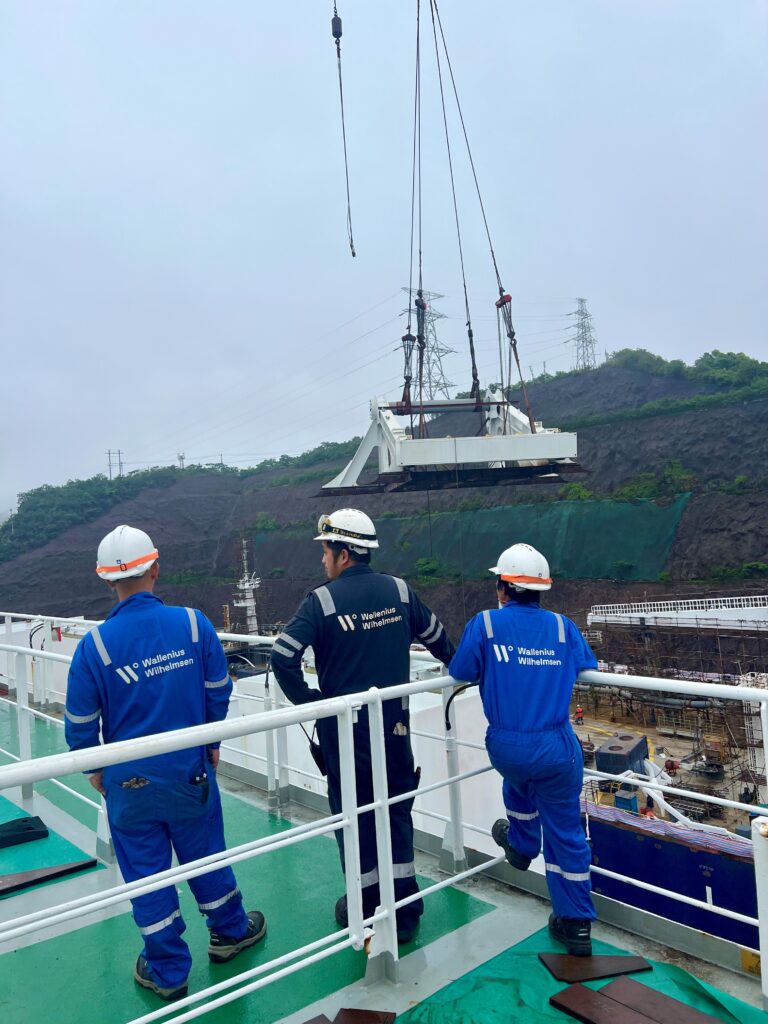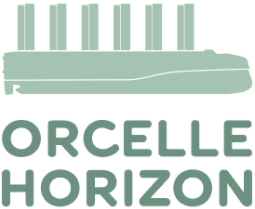Zhoushan, China—In a significant milestone towards new wind propulsion, our first demonstrator vessel, Tirranna, is docked at IMC Shipyard in Zhoushan, China. She is currently undergoing critical retrofitting to prepare for the first wing installation.

Adaptations for a One-Wing Retrofit
The retrofitting process on Tirranna is proceeding as planned, with an estimated completion date by the end of June. Prior to docking, extensive work has been done, including planning with the yard, preparing all design documentation (e.g., strength and fatigue analysis) by subcontractor Delta Marin, and obtaining class approval from DNV. This work has been crucial to ensuring an optimized solution related to steel weight and cargo loss and also gives valuable insight through the continuation of the Orcelle Wind.

The ongoing phase of the project is crucial as it prepares Tirranna for the upcoming installation of the Wind Propulsion Unit (WPU) scheduled to take place in Europe during the first quarter of 2025.
Key Activities:
- Steelwork: Extensive structural modifications are carried out to ensure the vessel has the necessary strength to accommodate the WPU.
- Power and signal cabling: The yard carries out all necessary cabling work to ensure the necessary WPU-vessel interface and minimize the work in 2025.
- Additional work and modifications: An additional X-band radar is installed aft, and the navigational lights arrangement is updated to accommodate the new WPU. In addition, a vessel inclining test is carried out to prepare all necessary stability documentation.
- Crew training preparation: Wallenius Marine, RISE, Wallenius Wilhelmsen, and Oceanbird are currently setting up a crew education program to ensure the crew is well-prepared to operate the new technology.
These modifications are part of Tirranna‘s ordinary 5-year docking process, aimed at preparing the vessel with the necessary reinforcements and installing the foundation for the WPU’s folding mechanism. The primary goal of this retrofit is to test and evaluate a full-sized WPU at sea on a real vessel, providing crucial data for the design and optimization of future wing sails and vessels such as the Orcelle Wind.

The Tirranna Testbed
As the first vessel to undergo this bespoke retrofitting, Tirranna serves as a testbed for groundbreaking technology. With a length of 230 meters and a capacity of approximately 8000 cars, she is the perfect vessel to prepare the RoRo segment. The insights gained from this installation will be instrumental in refining the design and performance of the WPU, paving the way for its implementation on the second demonstrator vessel, Orcelle Wind. Unlike Tirranna, Orcelle Wind will be a new build optimized for wind as the main propulsion, representing the next generation of sustainable shipping.
